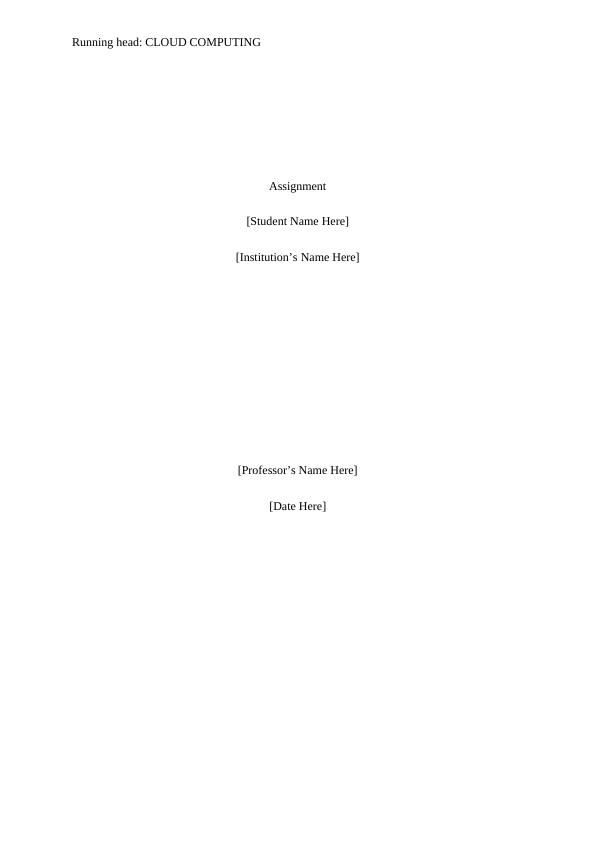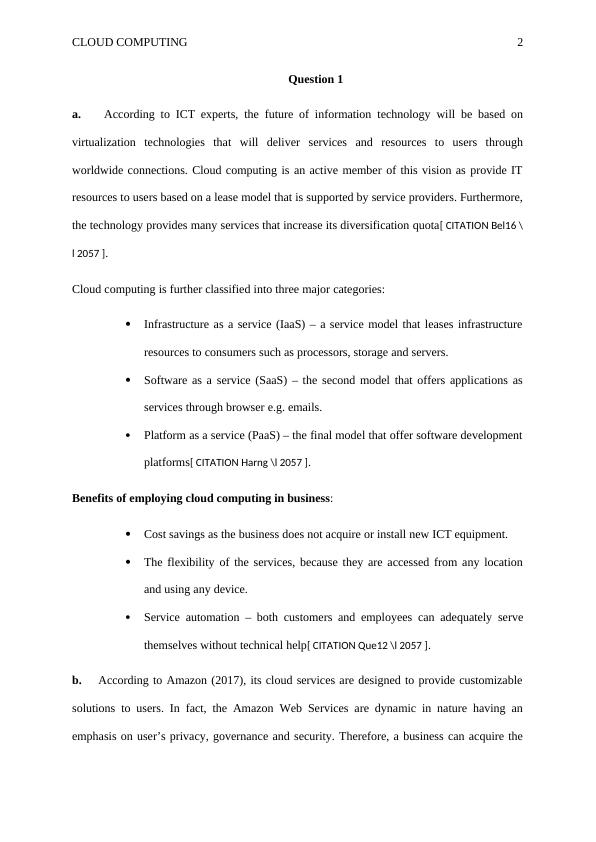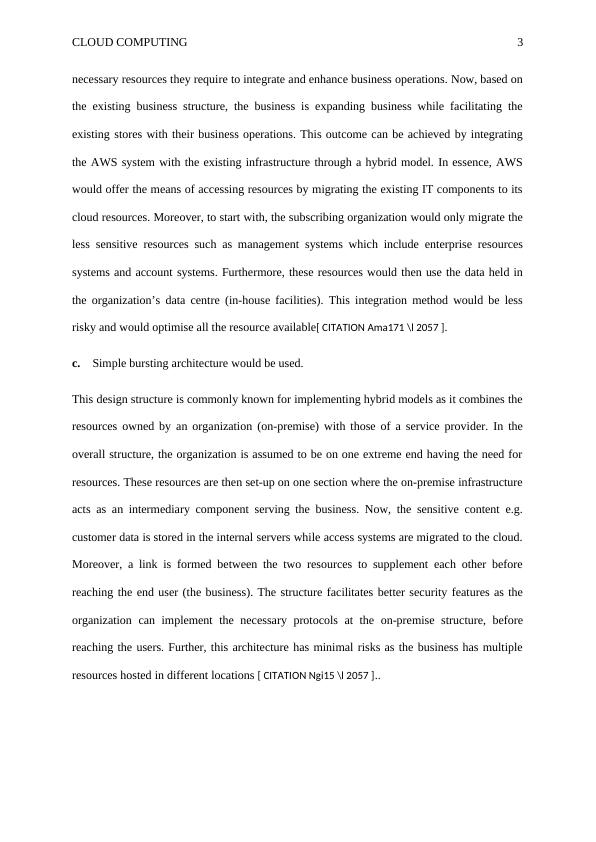ITC561 - Cloud Computing Classifications
10 Pages2246 Words76 Views
Charles Sturt University
cloud computing (itc561)
Added on 2020-03-02
About This Document
The below document discusses cloud computing and its uses. The below document discusses the various types of cloud computing. further, it discusses the Infrastructure as a service (Iaas), Software as a service (SaaS), and Platform as a service (Paas).
ITC561 - Cloud Computing Classifications
Charles Sturt University
cloud computing (itc561)
Added on 2020-03-02
ShareRelated Documents
End of preview
Want to access all the pages? Upload your documents or become a member.
ITC561 - Webs Stores and Cloud Computing
|8
|1822
|113
Benefits of AWS and Office365 for DTGOV
|51
|1950
|74
qwertyuiopasdfghjklzxcvbnmqwertyuiopasdfghjklzxcvbnmqwertyuiopasdfghjklzxcvbnmqwertyuiopasdfghjklzxcvbnmqwertyuiopasdfghjklzxcvbnmqwertyuiopasdfghjklzxccvbnmqqwertyuiopasdfghqqwertyuiop
|23
|7203
|209
Cloud Computing: Web Server Solutions, Office Automation, and Cloud Models
|17
|1370
|21
DGTOV Web Server
|16
|643
|62
Migration of Webserver
|20
|2057
|59



